Chicken Molting Care Guide: How To Help Your Hens?
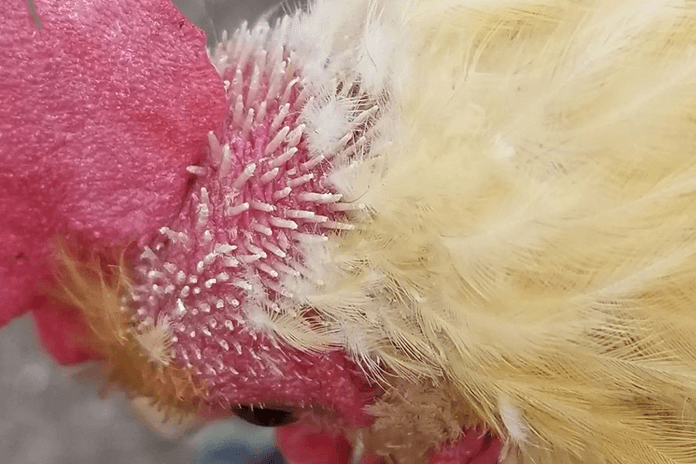
Chicken molting can be frightening, with bald spots and loose feathers inside the coop. It may look like your chickens are sick. But don’t worry! Molting is a very common yearly process that looks scary but isn’t dangerous.
This common annual occurrence may appear alarming but poses no real danger. Nevertheless, giving your chickens extra care and attention during this time is important, as it can be uncomfortable and even painful for them.
What is chicken molting? And how to take care of your chickens during molting? We’ll guide you through everything you’ve always wanted to know.
- What is chicken molting?
- How long do chickens molt?
- Caring for chickens during molting
- Why do hens stop laying eggs during molting?
- Chicken behavior during molt.
- Why is my chicken losing feathers outside molting time?
What is chicken molting?
Chicken molting is a natural process that takes place every year during fall. Like humans shed skin or animals shed hair, chickens shed their feathers. A chicken can look shabby or sick during molting, but there is nothing to worry about. They will show off their new flashy feather coat in no time, ready for winter!
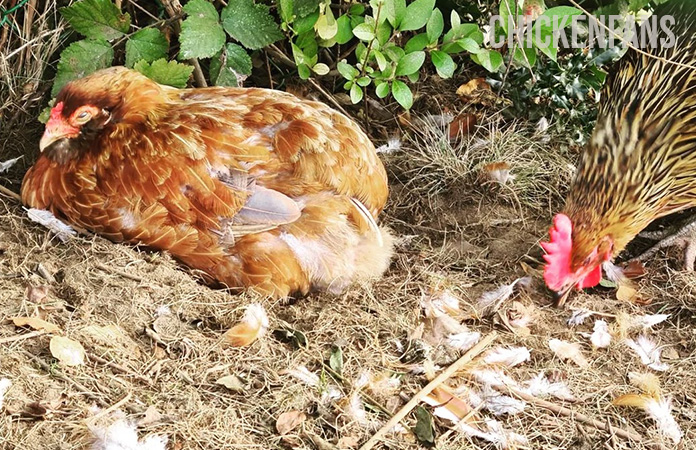
Chicken molting time can be very intense for your flock. Not only for hens; both hens and roosters will lose their feathers in exchange for new ones.
Baby chicks also change their feathers during the first year:
- 6 to 8 days: Chicks start exchanging their fluffy chick feathers for baby feathers
- 8 to 12 weeks: Baby feathers being replaced with new feathers
- After 17 weeks: They shed their baby feathers for a real full-grown feather coat
How long do chickens molt?
Chicken molting duration depends on chicken to chicken; your flock won’t probably mold simultaneously. So if you have quite a large flock, molting can last up to 2,5 to 3 months. Overall, chicken molting can last between 3 to 15 weeks, depending on your chickens’ age, breed, health, and internal timetable. So don’t worry if it takes a little more time for your chicken to exchange feathers.
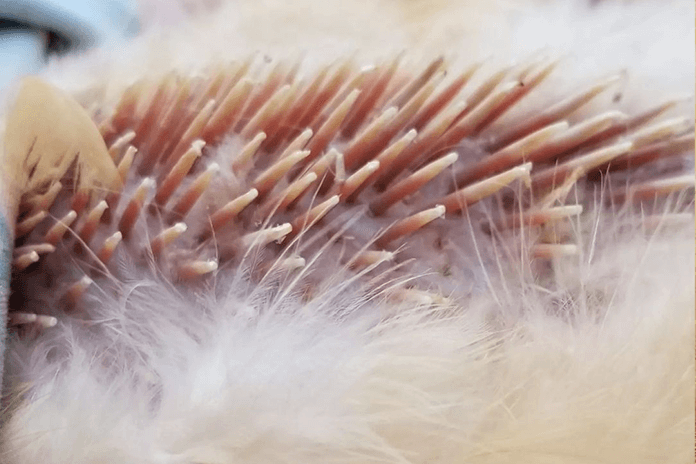
Most chickens molt gradually. It starts at their head, moves on to the breast and thighs, and finishes at the tail.
caring for chickens during molting
You will notice that chickens can look unhealthy, skinny, or even a bit sick during molting and are not very happy overall. For them, it’s not the most pleasant time of year. Chicken molting can be painful when new feathers are coming through; however, that’s not always the case, but it can be slightly uncomfortable.
Keep a couple of things in mind:
- Increase their protein intake
- Don’t pick them up during molting
- Pamper them with healthy snacks (but not too much)
- Don’t put chickens in a sweater!
Increase Protein Intake
Feathers are roughly 85% protein, so the production of new feathers takes up almost all the protein intake by your chicken. This also causes hens to stop laying eggs during the chicken molt. We will need to increase protein intake during this time of year to help them replace their feathers more easily and give them a protein boost.
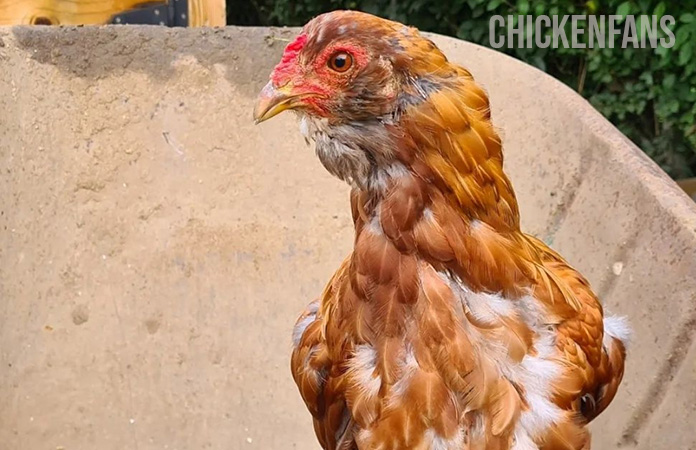
When the chicken molt has ended it’s not necessary to supplement protein to their diet, it can even be damaging to their health to keep giving them extra proteins, so please be careful.
During molting, you can switch them to high-protein chicken food that contains a minimum of 18 to 20% protein. You can also temporarily feed your chickens gamebird feed that contains around 22% protein.
Next to high protein-chicken food, always keep fresh water available, and it’s a good idea to add some apple cider vinegar. Raw (unpasteurized) vinegar contains loads of vitamins and minerals and also has an anti-bacterial effect that helps your chickens digest. Add one tablespoon of apple cider vinegar to one gallon of water.
Avoid Picking up your Chickens
Losing plumage is not painful at all, but chicken molting can get painful when new feathers regrow. Before they turn into actual feathers, these ‘pin feathers’ or ‘blood feathers’ as we call them look more like porcupine quills.
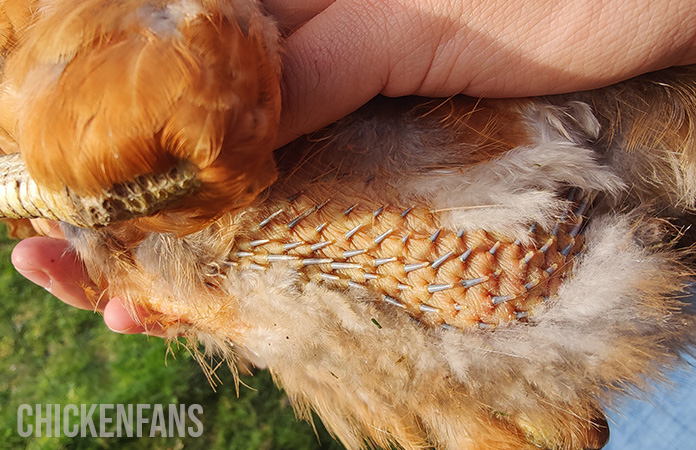
Touching these quills will hurt as they put pressure on their skin. So during this time, it’s very important not to touch the quills or pick up your chicken as it will increase stress levels and will be painful for them. If you need to examine them for any reason and need to pick them up, do it as fast as possible to reduce stress.
After about five days, the quills start to flake off and turn into real feathers.
Pamper Your Chickens With Healthy Snacks During Molting
Molting can be a rough time for your flock. Hens and roosters can get moody and unhappy. It’s always a good idea to pamper them with some extra love and care, and what better way to do it than with some yummy snacks?
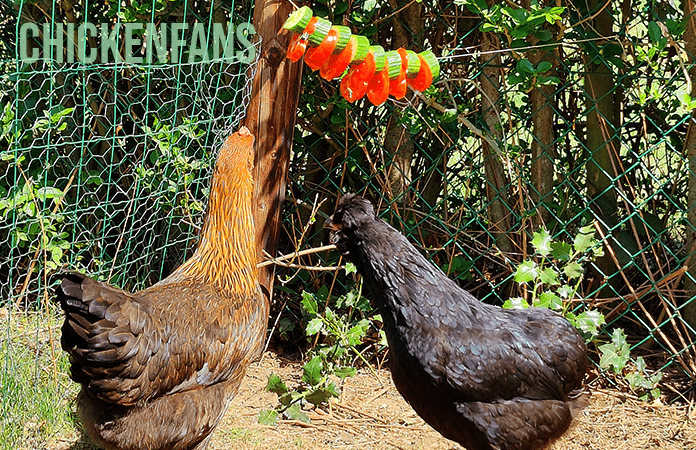
But there’s a ground rule: don’t exaggerate. Never feed your chickens more than 10% of their total feed of the day in snacks.
Don’t Put Chickens In A Sweater During Molting!
Sometimes chickens can look a bit scrappy and bald during molt, and you might think they’re cold. Believe us; they are not. Never put your chickens in sweaters. It will hurt them. The pin feathers are very sensitive when touched, so wearing a sweater over them will make them miserable, in pain, and sad.
Why do Hens Stop Laying During Molting?
Molting is a bit stressful and exhausting for a hen. They will need a lot of protein to make new feathers so that the protein level will be used completely for their new plumage. So during molting, the egg-laying will slow down at best, but most of the time it will come to a complete stop.
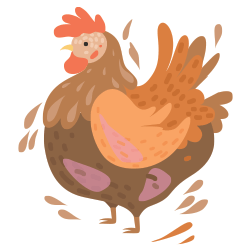
The second cause of hens stopping laying eggs during molting is daylight. As mentioned before, molting occurs during autumn until early winter, when days shorten. Hens need 14 to 16 hours of daylight to lay eggs, so this is why during winter, most hens stop producing eggs.
Don’t try and solve this by adding artificial light to the chicken coop during fall or winter. Forcing hens to keep laying eggs during molting can weaken their immune system. They’ll start laying eggs after molting is over.
Chicken behavior during molting
Don’t worry if your flock seems moody and unhappy during molting, it’s perfectly normal behavior, and they’ll cheer up in no time! But always keep an eye on your flock. You never know when problems will occur.
Situations during molting you need to keep an eye on:
- Pecking other members of the flock
- Bullying
- Stress
Pecking Other Members Of The Flock
Even when not molting chickens peck at each other, the behavior is not uncommon. You need to ensure that you’ve supplemented their food with extra protein. As mentioned before, chickens need increased protein levels during molting because of the new feathers coming through. If they lack protein, they will start pecking each other to get extra protein from the other chicken’s feathers.
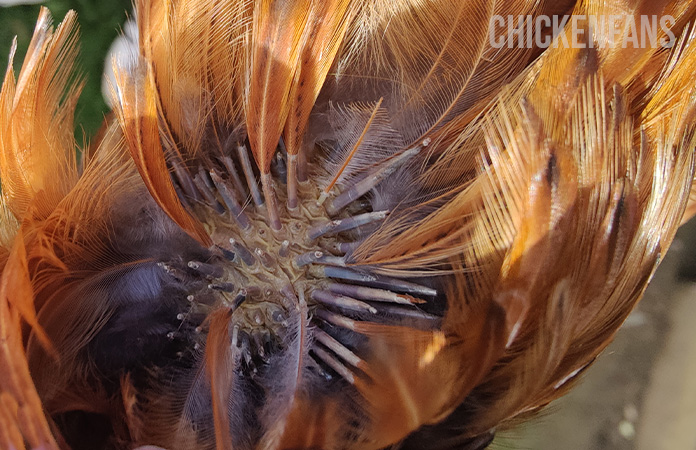
Bullying
Sometimes chickens are not very friendly to one another, which can worsen during molting. Chickens who are low in the pecking order can be bullied, which can cause stress, so this should be handled. Try to find out why this chicken is being bullied. Maybe she’s injured or wounded.
Injured chickens are considered to be ‘weak’ by other members of the flock and, therefore, are most likely to be bullied. When an injury occurs, you should remove that chicken from the flock to recover but don’t take her out of the chicken run. Create a ‘safe haven’ with some chicken wire inside the chicken run, so she stays visible to other flock members.
When there appear to be no visual or health reasons for a chicken to be bullied and the bullying won’t stop, remove the bully from the chicken run. After a couple of days, he or she can come back. They will possibly have lost their place in the pecking order. If not, and they start bullying again, remove the bully again, but maybe a bit longer this time. Keep on doing this until the bullying stops.
If nothing helps, another possible solution could be to install pinless peepers.
Stress
Try to avoid stressful situations as much as possible. Chickens’ skin is very sensitive during molting and should be handled accordingly. This means no loud music near the coop, try and solve any problems like bullying in your chicken coop and, as mentioned before, don’t pick up your chickens during molting as it can be painful.
Keep an extra eye on the chickens lower in the pecking order and ensure they feel ok.
Why Does my Chicken Lose Feathers Outside Molting Season?
Although molting is the most common reason for missing feathers, there are other causes for feather loss. When you pay attention to where these feathers are missing, you can determine what is wrong.
- Missing feathers on the head or neck: Can be caused by molting, lice, or bullying from other chickens.
- Missing chest feathers: Can be caused by broody hens. They tend to pick their chest feathers.
- Missing feathers near the wings: Probably caused by roosters during mating. You can protect your hens with a chicken saddle.
- Missing feathers near the vent area: Check for parasites, red mites, worms, and lice. But a hen could also be egg-bound.
- Random bald spots are usually caused by parasites, bullies inside the flock, or self-pecking.
Summary
Chicken molting is a common process that may look scary, but isn’t dangerous at all. During molting, your chickens exchange their old feathers for new ones, and although it can be an unpleasant time for them, it isn’t harmful.
If you want to learn more about raising chickens or common health issues, please visit our ‘Raising Chickens‘ and ‘Health‘ pages.
Credits featured image: @dogdazedlife (IG)























